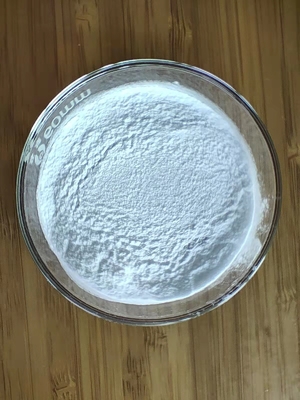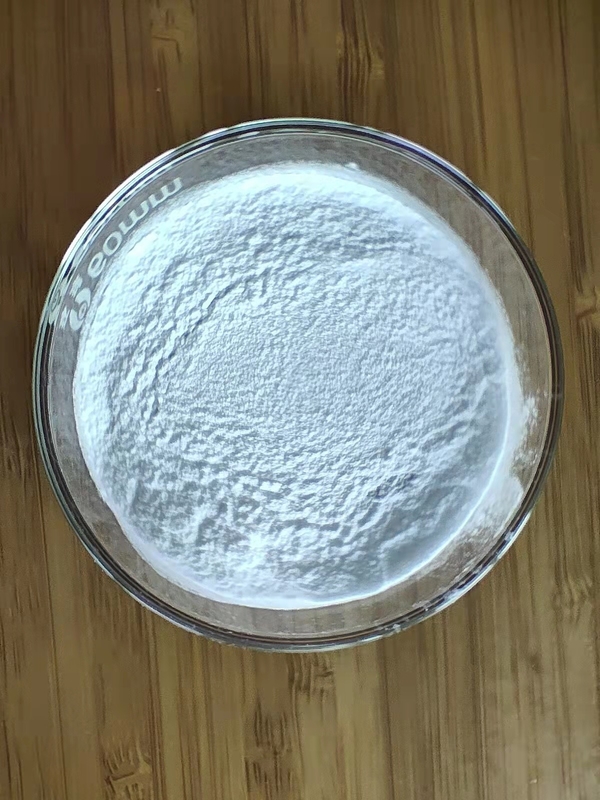White Anti Stress Γ-Aminobutyric Acid 98% With Characteristic Odour
Product Details:
| Place of Origin: | China |
| Brand Name: | DING SU |
| Certification: | ISO9001 |
| Model Number: | γ-aminobutyric acid 98 |
Payment & Shipping Terms:
| Minimum Order Quantity: | 1TON |
|---|---|
| Price: | USD 6/kg |
| Packaging Details: | 25kg/bag |
| Delivery Time: | 15 |
| Payment Terms: | L/C,T/T |
| Supply Ability: | 10000MT/year |
|
Detail Information |
|||
| Form: | Powder | Color: | White |
|---|---|---|---|
| Solubility: | Water Soluble | Odour: | Characteristic Odour |
| CAS: | 56-12-2 | ||
| Highlight: | White γ-Aminobutyric Acid 98%,Characteristic Odour γ-Aminobutyric Acid 98%,Anti Stress γ-Aminobutyric Acid |
||
Product Description
Gamma-aminobutyric acid (GABA) is a chemical that is made in the brain and also found in some foods. In the brain, GABA has anti-stress effects.
GABA Feed Additive: Enhancing Growth, Stress Resistance, and Hypoxia Tolerance in Livestock and Aquaculture
Overview
In China’s livestock and aquaculture feed industry, Gamma-Aminobutyric Acid (GABA) has received growing attention due to its multiple physiological benefits. GABA improves feed intake, enhances anti-stress and anti-hypoxia capabilities, and promotes growth performance in animals. It is now widely recognized as a functional feed additive for pigs, poultry, fish, shrimp, and other species.
1. Growth-Promoting Effect
GABA stimulates the secretion of gastric juices and growth hormone, thereby boosting feed intake and daily weight gain in livestock and poultry. It also activates the feeding center in the brain, increasing appetite. Additionally, GABA reduces involuntary animal movement, conserving energy and supporting weight gain.
Recommended dosage: 10–100 g/ton
Performance benefits:
Increases daily weight gain by 5%–20%
No negative impact on feed conversion ratio (FCR)
2. Anti-Heat Stress Function
Heat stress is a major challenge in animal production, leading to reduced feed intake and productivity. GABA, as a neuroinhibitory amino acid, helps animals maintain stable performance under heat stress by inhibiting neurotransmitter overactivity and lowering energy expenditure.
For livestock and poultry in growth stages:
Dosage: 10–100 g/ton
Benefits: Enhanced heat resistance, improved growth rate
For lactating sows:
Dosage: 200–300 g/ton
Benefits:
Increased feed intake and milk yield
Reduced fat loss during lactation
Shortened weaning-to-estrus interval
Higher lactose and fat content in milk
Improved piglet survival rate and weaning litter weight
3. Anti-Hypoxia Effect in Aquaculture
In aquaculture systems, oxygen depletion is a common issue that can lead to lower survival rates and reduced yields. GABA has demonstrated a strong anti-hypoxia effect by helping aquatic animals resist damage from oxygen-deficient environments.
GABA establishes a protective inhibition mechanism in the central nervous system, reducing the toxic impact of excitatory amino acids caused by hypoxia.
Recommended dosage: 10–20 g/ton in feed for fish, shrimp, and crabs
Results: Improved tolerance to low oxygen levels, better survival, and higher productivity
Conclusion
GABA is a versatile and effective feed additive that addresses key challenges in animal production, including poor growth performance, heat stress, and hypoxia. Its use in feed formulations supports:
Improved growth rates
Enhanced feed efficiency
Greater stress resilience
Increased production output in livestock and aquatic species
With proven benefits and safe application, GABA is becoming a must-have ingredient in modern animal nutrition strategies.
Physical and Chemical Characteristics are as follows:
|
Items |
Standard |
|
γ-aminobutyric acid |
≥98% |
| Moisture | ≤2% |
| Heavy Metal |
≤ 0.001% |
Usage & Dosage:
Mixing into Feed Evenly. dosage is recommended in feed as follows (g/mt):
| sow | fattenning pig | piglets | layer | shrimp | fish |
| 40-60 | 30-50 | 20-40 | 10-60 | 100-120 |
80-100 |
Storage: Sealed Tightly. Avoid Exposure to Moisture.
Expiry: Two years from the date of production.
![]()





